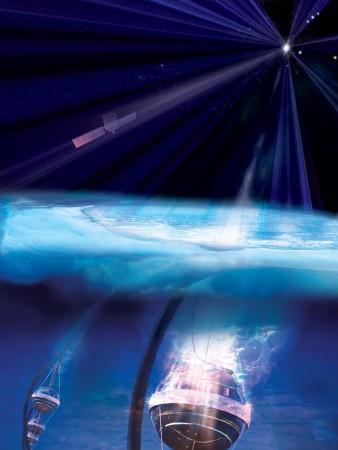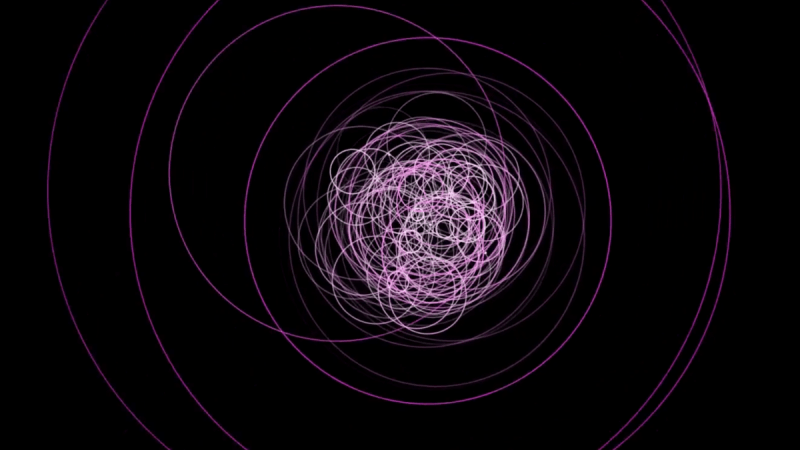
Neutrinos are massless particles that do not interact with matter and for the first time ever, Neutrinos from outside the Milky Way galaxy have been detected by an observatory in the south pole, buried below Antarctic ice.
The IceCube observatory is buried deep below the Antarctic ice sheet about 1,500 metres below the surface and is spread across a square kilometre, making it one of the largest and first gigaton Neutrino observatories ever built. Physicists have been detecting these mysterious particles for a really long time and now reports suggest that they might have just detected a neutrino that originated from a supermassive black hole from a different galaxy- from about 3.7 billion light-years away says NASA.
Scientists were making use of NASA's Fermi Gamma-ray Space Telescope and found that the source of this high-energy neutrino was from outside the galaxy. This particular neutrino had been traveling for about 3.7 billion years at nearly the speed of light before scientists found it passing through Earth.
NASA says that this is farther than any other neutrino which scientists have so far been able to successfully identify.
While neutrinos are generally not easy to detect, high-energy ones are even harder to find and scientists believe that they are created as a result of some of the most powerful events in the universe. Traveling at speeds just short of the speed of light, they rarely interact with other any form of matter, says NASA. This ability allows them to fly through, unobstructed, across time and space forever.
This high-energy neutrino was detected by IceCube Neutrino Observatory. At the same time, Fermi scientists were able to track its origin by tracing it back to an explosion of gamma-rays from a supermassive black hole in the Orion constellation.
"Again, Fermi has helped make another giant leap in a growing field we call multimessenger astronomy," said Paul Hertz, director of the Astrophysics Division at NASA Headquarters in Washington.
"Neutrinos and gravitational waves deliver new kinds of information about the most extreme environments in the universe. But to best understand what they're telling us, we need to connect them to the 'messenger' astronomers know best—light."

The neutrino was detected on Sept. 22, 2017. Scientists at the IceCube detected signs of a neutrino crashing into Antarctic ice with energy levels of about 300 trillion electron volts. This, notes the NASA report, is over 45 times the achievable energy in even the most powerful particle accelerator on Earth.
It was this level of energy that led scientists to believe that the neutrino should have come from outside the Solar System. The main source of neutrinos in the Solar system is the Sun. By backtracking its path, IceCube was able to indicate where in the sky it came from. The report explains that an automated alert system notified observatories around the planet to look for flares or gamma-ray bursts in the travelling path that could possibly be associated with this event.
"Fermi's LAT monitors the entire sky in gamma rays and keeps tabs on the activity of some 2,000 blazars, yet TXS 0506 really stood out," said Sara Buson, of NASA at Goddard who along with Anna Franckowiak, of Deutsches Elektronen-Synchrotron research centre, did the data analysis.
"This blazar is located near the center of the sky position determined by IceCube and, at the time of the neutrino detection, was the most active Fermi had seen it in a decade."
Fermi's Large Area Telescope found a gamma-ray emission from a blazar— an active galaxy with a supermassive black hole that is billions of times the Sun's, continuously blasting jets of particles outward in opposite directions at almost light speed. This blazar is pointed right at Earth, so NASA says it is especially bright.













